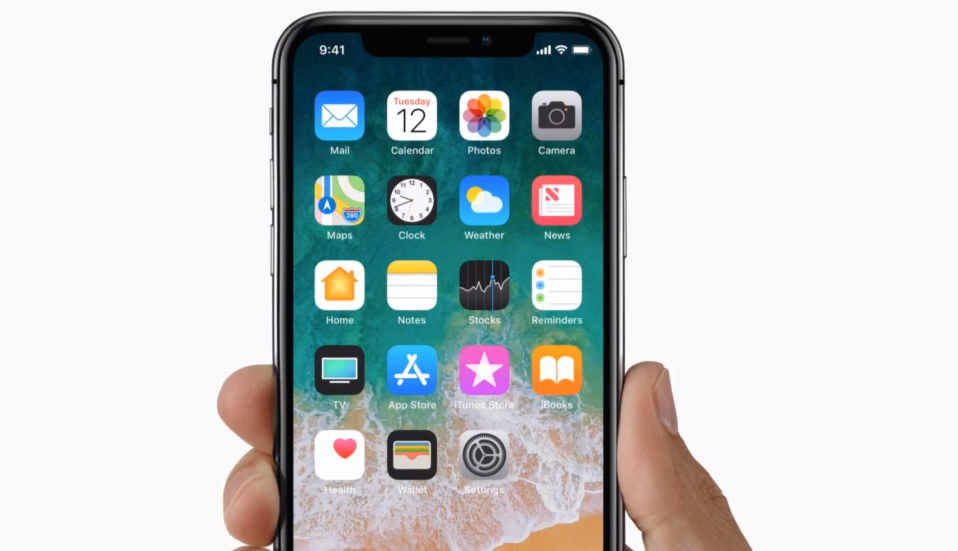The notch on the iPhone X has received a mixed response from consumers. Some users just hate it while others find it bearable. Irrespective of the consumer opinion, Apple could not completely ditch the notch because it houses some critical components including the ear speaker, TrueDepth camera system, front camera and other sensors. Apple might be planning to make the notch slimmer with the 2019 iPhones, according to a report coming out of South Korea.
Apple to combine the Face ID and RBG cameras into a single module
The TrueDepth camera – which includes the flood illuminator, dot projector and infrared camera – supports advanced features like Face ID and Animoji. The dot projector beams 30,000 invisible dots on your face and then a special camera reads the dots to authenticate the user. Apple is planning to release three iPhones later this year, and all three of them are rumored to have the Face ID facial recognition system. It means this year’s phones will keep the same notch.
Korean publication ETNews reports that the 2019 iPhones will not be all that notchy. Industry sources told the publication that Apple is working with LG Innotek to shrink bezels on the 2019 iPhones. The tech giant is looking into ways to combine the front camera with the Face ID sensors. If it happens, it will dramatically reduce the number of sensors placed in the notch, giving Apple an opportunity to make the bezels slimmer.
The current iPhone X notch includes dedicated sensors such as the dot projector and flood illuminator for Face ID along with a regular RGB camera. The RGB camera is not part of the Face ID setup. According to the report, Apple could combine the Face ID sensors and the RGB camera into a single module to shrink the size of the notch. It would be a huge challenge for the company.
Even if Apple succeeds in combining the Face ID and RGB cameras into a single module, it would still not be enough to make the 2019 iPhones full screen. The notch would still be there, albeit a smaller one. It’s because there will also be other components such as the microphone, speaker, ambient light sensor, and proximity sensors. Apple is still years away from embedding all the sensors under the display panel and offering a notch-less all-screen iPhone.
Apple and LG Innotek working to shrink the notch on 2019 iPhones
The presence of the notch on iPhone X affects user experience in certain ways. For instance, Apple uses the screen space on either side of the notch to show status bar items such as time, network strength, battery, etc. But it doesn’t have enough space to show the battery percentage. Users must swipe down from the top right corner to view the battery percentage in Control Center.
Earlier this month, The Investor reported that Apple was investing $821 million in LG Innotek to ensure the steady supply of 3D sensing modules used in the iPhone X’s Face ID setup. LG Innotek’s sensors will be used in this year’s flagship iPhones as well as the iPad Pro 3. According to ETNews, LG Innotek is also helping Apple combine the Face ID sensors with the front camera into a single module.
LG Innotek said in a regulatory filing that it would invest $821 million to build new fabrication facilities for its camera and emitter modules business. The deal with Apple was reportedly finalized after a series of meetings between Apple CEO Tim Cook and LG Innotek chief Park Jong-seok in November.
LG Display to supply OLED panels for this year’s iPhones
According to KGI Securities analyst Ming-Chi Kuo, Apple will be releasing a successor to the iPhone X with a 5.8-inch OLED display this year. There will also be a 6.5-inch OLED model and a 6.1-inch iPhone with an LCD panel. All three of them will sport the Face ID facial recognition system, according to Kuo. Apple is also rumored to release the iPhone SE 2 with wireless charging and a glass back in March this year. Little is known about the 2019 iPhones at this point.
In yet another victory for LG, its display arm LG Display has secured a deal with Apple to supply OLED panels for this year’s 6.5-inch iPhone X Plus. LG Display would supply only 15-16 million OLED screens. Samsung will remain the largest supplier of OLED panels to Apple. Samsung is estimated to make 180-200 million OLED panels for the iPhone X and its successor this year. Samsung is the only supplier of OLED screens for the iPhone X while LG currently makes LCD screens for the iPhone 8 and 8 Plus.
Apple was reportedly investing $2.7 billion in LG Display to help the latter beef up its OLED production capabilities. LG would start producing OLED screens for the iPhone X Plus in the second quarter this year. Since Apple is looking to reduce its reliance on Samsung Display, LG could also make display panels for the 2019 iPhones.












